If Italy was a pressure washer, I would want to be a dirty, dirty piece of flooring.
Although abnormally difficult to fault this uniquely boot-shaped country, its one undeniable flaw is that of its sweaty tourist mass, typically descending like a horde of blind monkeys throughout the entire summer.
And the alternative is just grey and cold.
Which is where I come in! Yes, I have written a top-tier guide vis-à-vis the best time to visit Italy, aiming to help you hit the perfect balance between not being wet, and avoiding the humongous armpit of tourism. With my tips, tricks, and blatant travelling wizardry, your trip is sure to be extra special (don’t doubt it).
So let’s jump in!
Best Time To Visit Italy – April and May, September and October
Best Time To Go To Rome – April and May, September and October
Best Time To Go To Tuscany – Autumn (September and October)
Best Time To Go To Venice – September and October
Best Time For Sightseeing – Spring (April, May) and Autumn (September, October)
Cheapest Time To Visit Italy – January
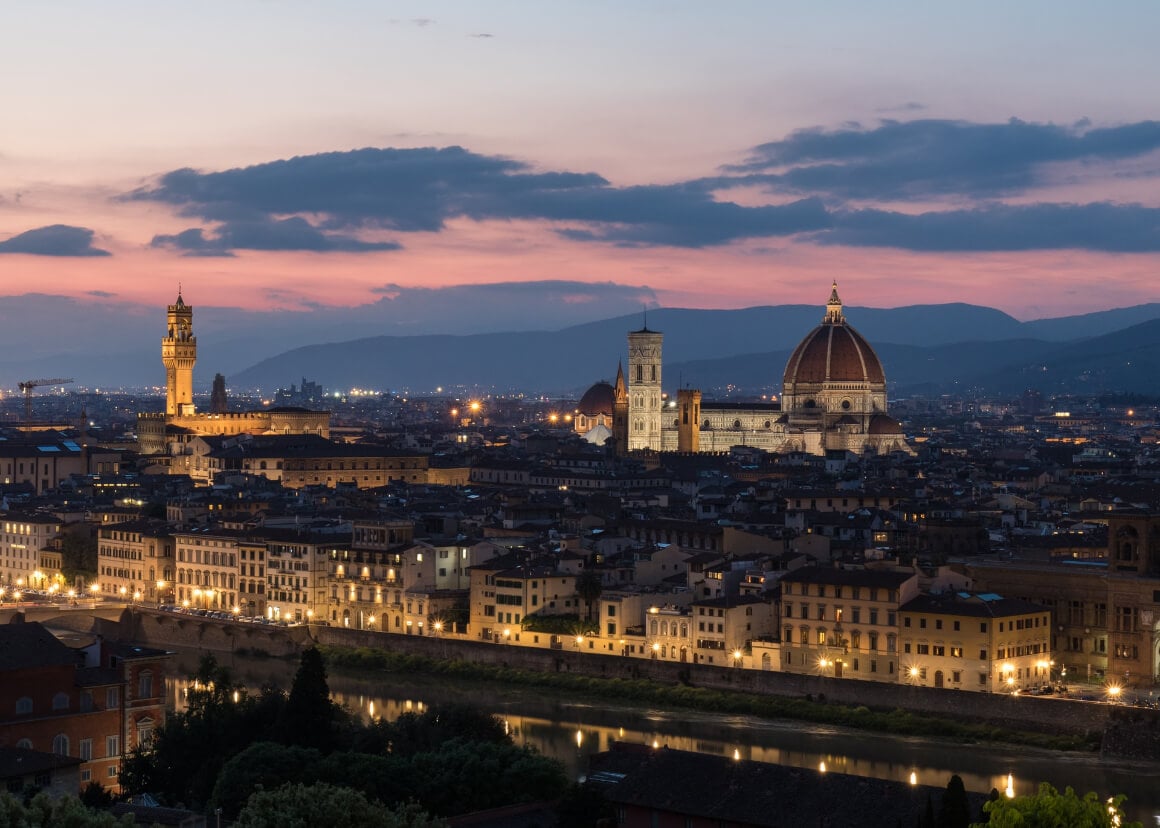
The Broke Backpacker is supported by you. Clicking through our links may earn us a small affiliate commission, and that's what allows us to keep producing free content 🙂 Learn more.
When is the Best Time to Visit Italy?
Things get super hot during July and August, which is why the best time to visit Italy is either May-June or September-October. During these months, travelling to Italy is warm, sunny, active, and fun!
The peak tourist season runs May-September, and sightseeing can become a little like a schoolyard brawl (except much stickier), so I would recommend the months of April and October if you are a serious culture mulcher.
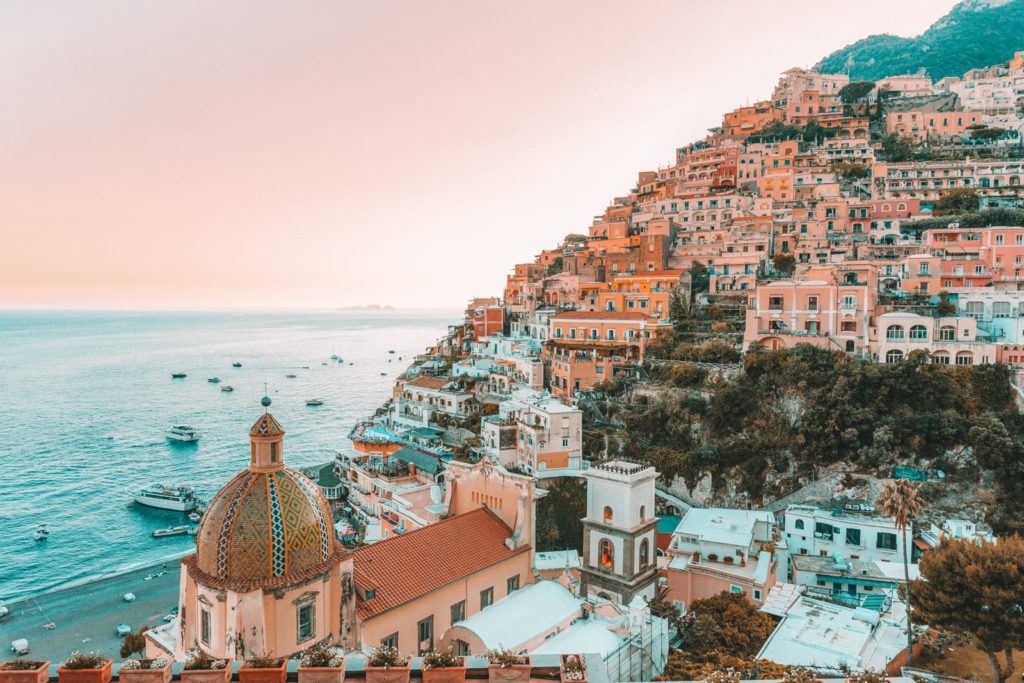
The off-season (running November-February) offers lower prices, and finding great places to stay is a little easier. Keep an eye out for cold weather (especially in the Northern regions), as Italy loses much of its sunny Mediterranean glamour during these months. There’s some great skiing on offer too!
Travelling in the hottest months (July and August) is doable, especially if you stay in North Italy. This is usually when locals take to the beaches in droves, so you’ll want to avoid resorts and popular beaches. Some of the best places to see in Italy can be relatively tourist-free if you’re fortunate, so it might be worth trying your luck!
Cheapest Time to Visit Italy
If you’re looking for a bargain, book in February or November, as this is the cheapest time to visit Italy.
As such a universally popular destination, Italy can get pricey. Especially in response to peak season, when major tourist spots can get booked up months in advance. Italy is host to some categorically high prices, so don’t be deflated if this holiday doesn’t work out cheaply!
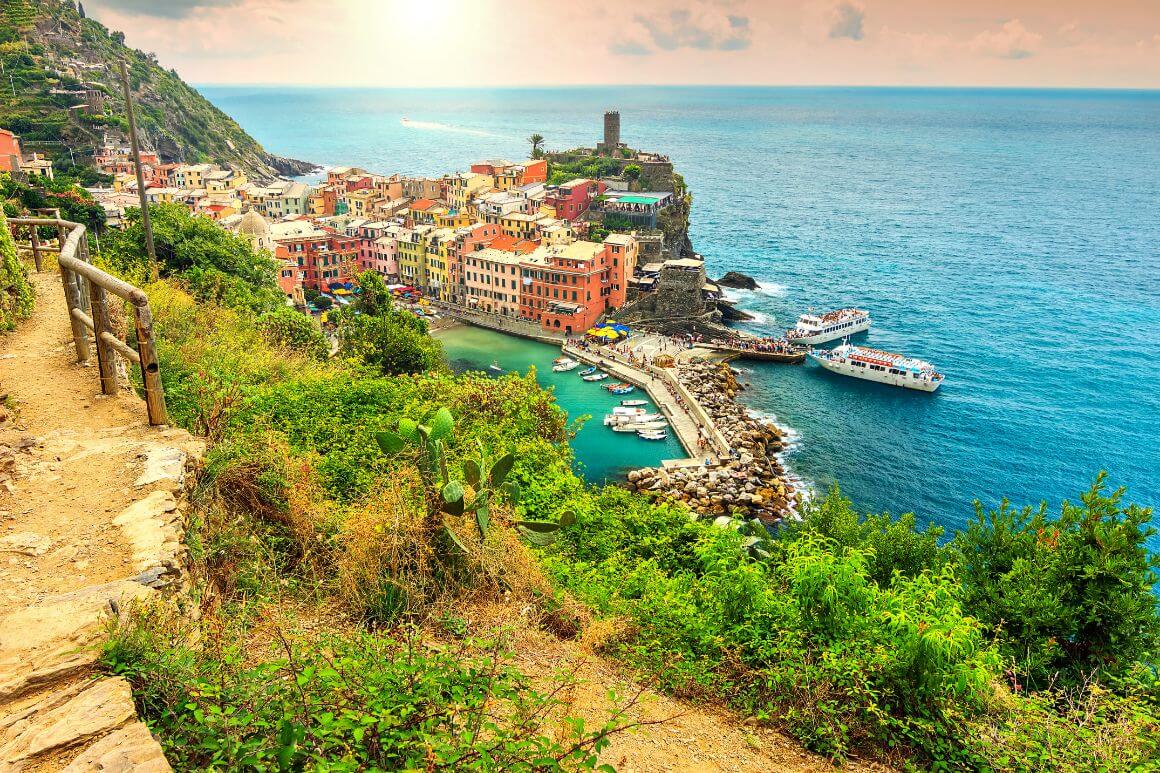
Regionally, prices fluctuate in response to the fantastic festivals, celebrations, and events that attract visitors, but this can be offset somewhat by booking well in advance.
In the late spring or early fall, it’s possible to snap up some good deals on accommodation, especially if you’re willing to risk waiting until last-minute deals become available. In places that are typically “touristy” (specifically Venice), don’t do this, as you are more likely to end up with nowhere to stay at all.
When to Visit Italy – Weather by Month
If you’re still in any doubt as to the best time to visit Italy, we’ve broken down each month of the year to give you a more in-depth perspective. Each month has its highlights, so don’t knock ’em til you try them!
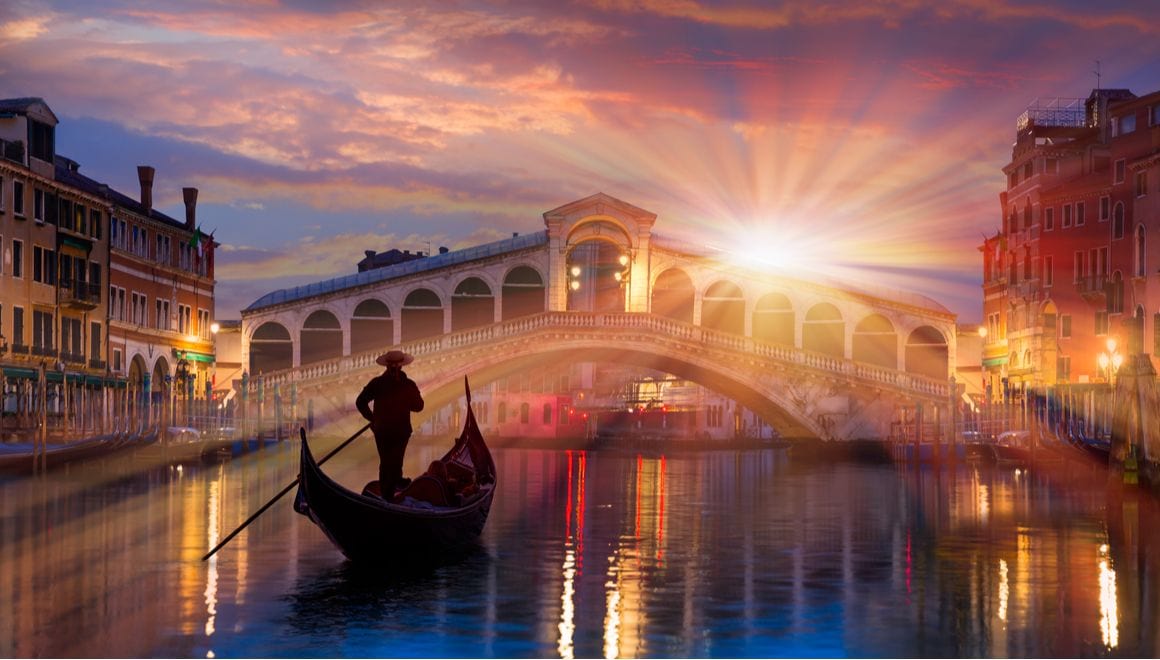
As with any country, the weather difference between the northern and southern parts can be quite drastic. The south can be much hotter and dryer than northern Italy, so if it is too cold, just take a train southwards!
January in Italy
- Average Max. Temperature: 11.4°C, 52.5°F
- Rainfall: 9 days
January in Italy is cold, wet, and grey. The northern parts of the country are more prone to snow than the slightly warmer south.
There are far fewer tourists at this time, which means you’re likely to benefit from some attractive pricing on accommodation. Some sights and attractions are likely to be closed for maintenance or will be operating at shorter hours due to shorter daylight hours.
The post-Christmas winter sales kick off during January, so if you’re hoping to do some shopping, you’re likely to pick up some great deals.
February in Italy
- Average Max. Temperature: 12.1°C, 53.8°F
- Rainfall: 9 days
February is still fairly cold for the most part. The mountain regions in the north receive plenty of snow, making this the most popular (and expensive) time to go skiing.
The south of Italy will begin experiencing greater temperature fluctuations throughout the day – while still fairly cold in the mornings and evenings, it can get nice and warm during the day.
There are fewer tourists at this time and prices are still fairly low. The Venice carnival causes a tourist spike at this time, which is something to take into account when you visit Italy.
March in Italy
- Average Max. Temperature: 15.2°C, 59.3°F
- Rainfall: 9 days
While certainly getting warmer, the weather in March can be unpredictable at best. Make sure to bring a mix of warm clothing and a few lighter items, especially if you’re visiting the southern regions which can be highly variable.
The days are getting longer which means more time to explore and longer operating hours at main attractions. The not-too-hot, not-too-cold temperatures and still reasonable prices make this a really good time to visit Italy for great value. Although the visitor numbers start to increase, attractions don’t feel crowded.
Depending on when Easter falls, this may impact your trip with many holy days and holidays when some attractions may be closed. This is particularly true of Rome at this time, which also attracts many people coming to attend the Pope’s Easter Mass. Think carefully before you book your Italian weekend break!
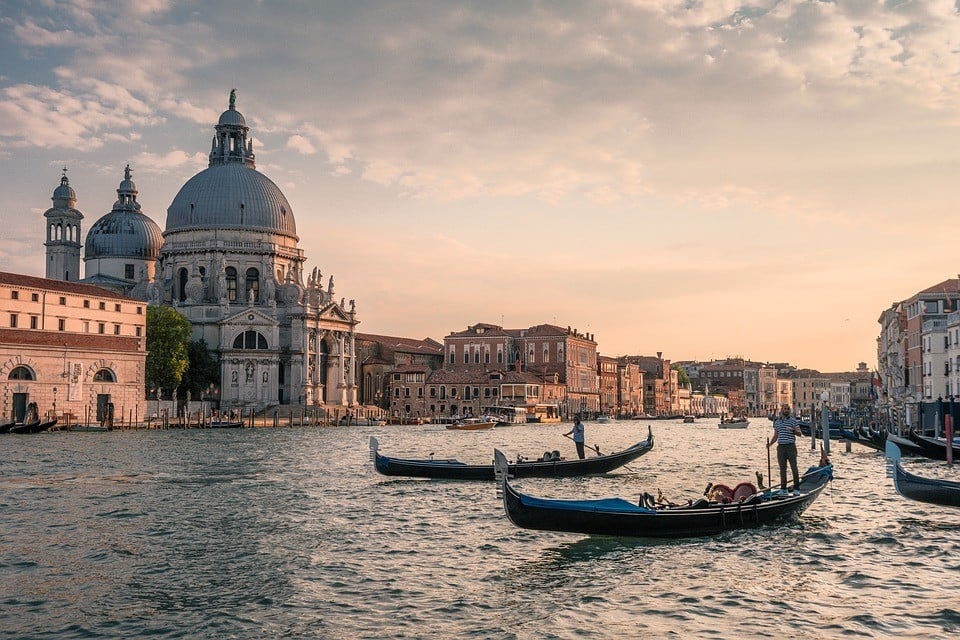
April in Italy
- Average Max. Temperature: 18.4°C, 65.1°F
- Rainfall: 11 days
Weather in Italy in April is still variable – mostly mild and warm, with the chance for showers still present. The south offers higher temperatures, and less rainfall, and can feel decidedly more like summer is on the way.
As temperatures climb and days lengthen, most attractions are open and operating longer hours – the country is fully ready for the summer influx of tourists. Visiting at this time is still largely uncrowded and less expensive than in high summer.
Outdoor pursuits, in general, pick up from April, including popular hiking trails and coastal towns.
May in Italy
- Average Max. Temperature: 22.5°C, 72.5°F
- Rainfall: 8 days
May is a great time to visit Italy – the weather is warm, but not stiflingly hot, and the tourist numbers are climbing but it’s not overly crowded. You might still experience the occasional shower and some cooler weather, especially in the north.
If you’re heading to the countryside or planning to visit the many gardens or outdoor attractions, May offers the best weather in Italy for this.
Because of the good weather, this is also cycling season, with the Giro d’Italia cycle race taking place. The race route changes annually, so it’s a good idea to check ahead of time and plan around this. It can cause prices to increase dramatically in affected towns and cities.
June in Italy
- Average Max. Temperature: 27.4°C, 81.4°F
- Rainfall: 5 days
Summer and peak season arrive in Italy along with large crowds of tourists. Consequently, prices at this time can skyrocket.
It’s the ideal time for outdoor activities and catching open-air festivals and concerts. 2 June is a national holiday – Republic Day – so expect restricted trading and operating hours at major attractions and sites.
Temperatures reach the high 20s (Celsius) and rainfall is minimal – bring a light jacket just in case.
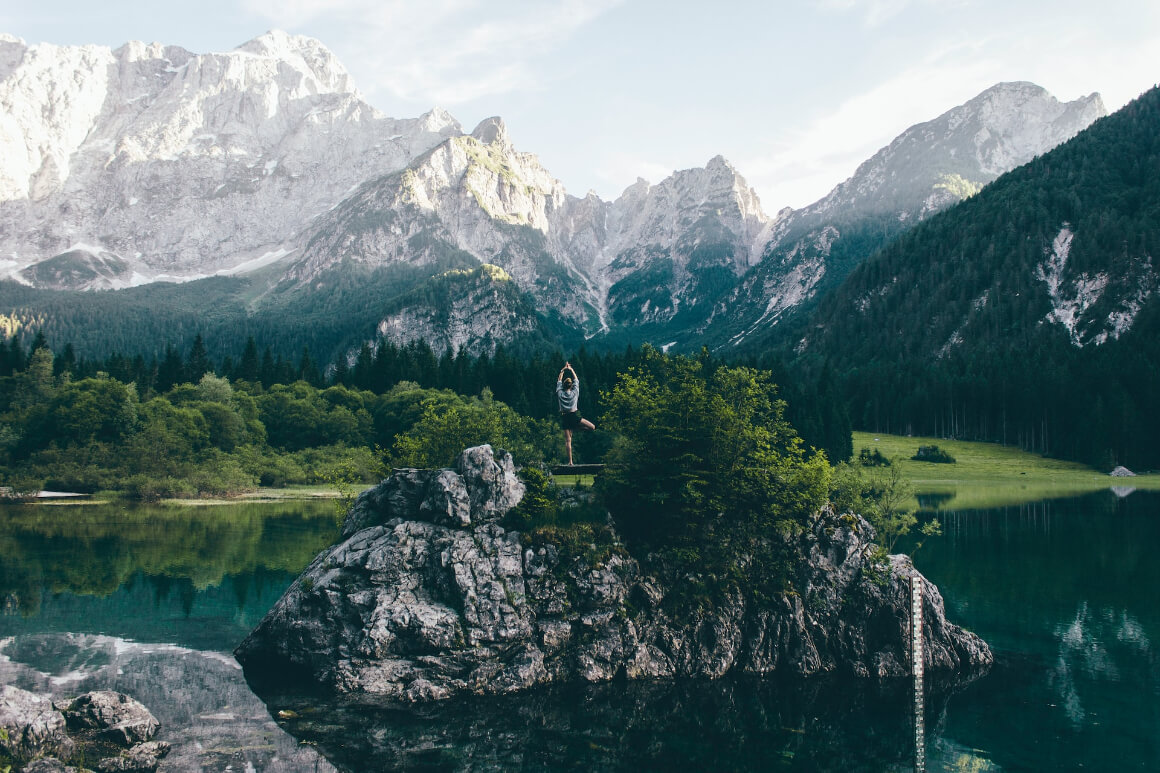
July in Italy
- Average Max. Temperature: 30.3°C, 86.5°F
- Rainfall: 4 days
This is one of the year’s hottest months, second only to August. The heat in the cities can be stifling, and when combined with the increased crowds of tourists, it can make sightseeing challenging.
This is the most expensive time to visit generally, with prices rising to meet the increased demand for accommodation and flights. If you are hoping to travel to Italy in July, make sure to make your arrangements well in advance.
August in Italy
- Average Max. Temperature: 30.5°C, 87°F
- Rainfall: 4 days
August is the traditional summer holiday period for locals. This means you’re not only competing with other tourists for accommodation along the coast but locals too.
It’s unbearably hot, especially in the cities and the southern regions.
Be aware that if you’re visiting the now decidedly empty cities to benefit from less crowded conditions, there is the chance that some attractions, restaurants, and services aren’t operating at this time.
September in Italy
- Average Max. Temperature: 25.5°C, 77.9°F
- Rainfall: 9 days
Summer begins to wind down in September. Days are still hot, but the evenings can get cooler. Beach holidays are more pleasant at this time and less crowded.
If you’re heading to Venice, expect busier conditions as this is the month of the Venice International Film Festival as well as the famous Regata Storica boat races.
Food lovers will delight in the many harvest celebrations and food-related festivals. This is the best time to try all the local delicacies and sample Italy’s gastronomic delights.
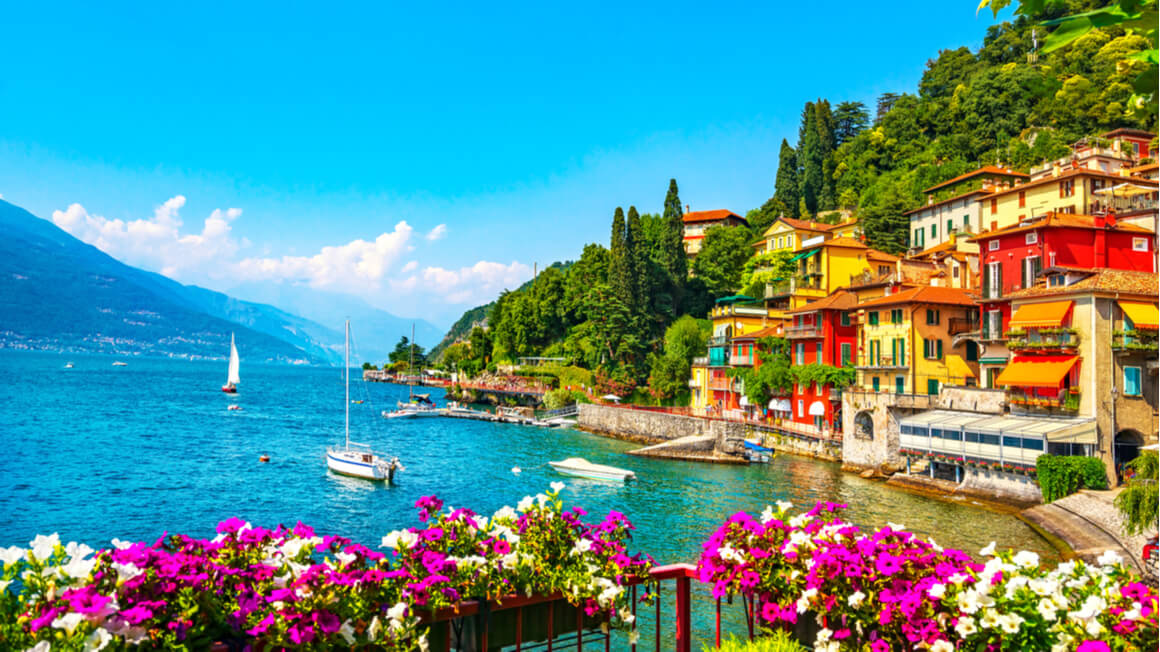
October in Italy
- Average Max. Temperature: 21.3°C, 70.3°F
- Rainfall: 10 days
The weather is mild at this time, considerably cooler but still pleasant. Pack for variable conditions as you’re likely to experience some rain, especially further north.
Sightseeing is easier at this time too with shorter queues and smaller crowds than during July and August. You can still catch the many food festivals and harvest celebrations, especially as you move outside of the major cities.
November in Italy
- Average Max. Temperature: 16.3°C, 61.4°F
- Rainfall: 12 days
Grey skies and rain become more frequent as temperatures decline, making it less enjoyable to be outdoors. You may encounter snow at higher altitudes.
As the tourist season winds down, prices follow suit making it easier to pick up a better deal on accommodation. Outside of the major cities, tourist attractions and beach accommodations close up altogether for the off-season.
The daylight hours are much shorter, so if you’re planning on sightseeing, take that into consideration. This is likely to impact the operating hours of major sites.
December in Italy
- Average Max. Temperature: 12.5°C, 54.4°F
- Rainfall: 11 days
As with most destinations, expect an increase in prices and tourist numbers around the holiday period. While this technically isn’t peak season for most of the country, it is the beginning of the busiest time in the Italian ski resorts where snowfall increases as you head into January.
Best Time to Visit Italy by Place
Best Time to Go to Rome
Rome, the eternal city, is generously sprinkled with historic ruins, galleries, museums, and sights. The sheer romance and charm of this vibrant city ensure it’s perennially popular with tourists. Yes, there is a hell of a lot to see and do in Rome.
From the awe-inspiring Colosseum, the Vatican City, the Roman Forum, and the iconic Trevi Fountains, the city boasts art and history clout unrivalled by other destinations. The entire city can sometimes feel like a big museum/art gallery that simply cannot be fully explored in just one trip.
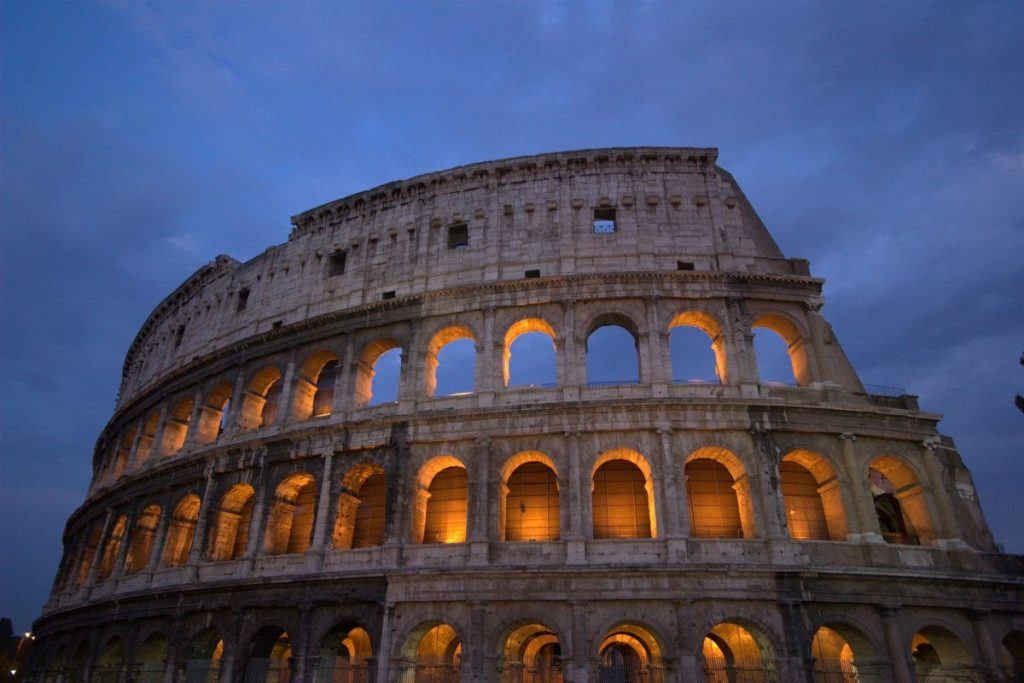
There’s never really a bad time to visit Rome, but the Goldie Locks times would be the spring (April to June) and autumn (September to October) when the weather is warm but not too hot. These times of year are perfect for Roman holiday itineraries – walking along the cobbled streets and across the many picturesque bridges over the river.
The least desirable time to visit would be August – it’s almost unbearably hot, and most of the locals have left the city and headed to the coast. That said, accommodation in Rome can be cheaper during this period, which is great considering Rome can be quite expensive.
Best Time to Go to Tuscany
The summer months between May and July are the busiest in terms of tourists. The cities can feel crowded, and the weather can be stifling. In the countryside, this is a rewarding time to see field upon field of sunflowers and enjoy heaps of fresh produce.
The ideal time for a visit to Tuscany is in the spring between April and May, and the autumn between October and November. This is when the temperatures are less oppressive and other tourists less abundant.
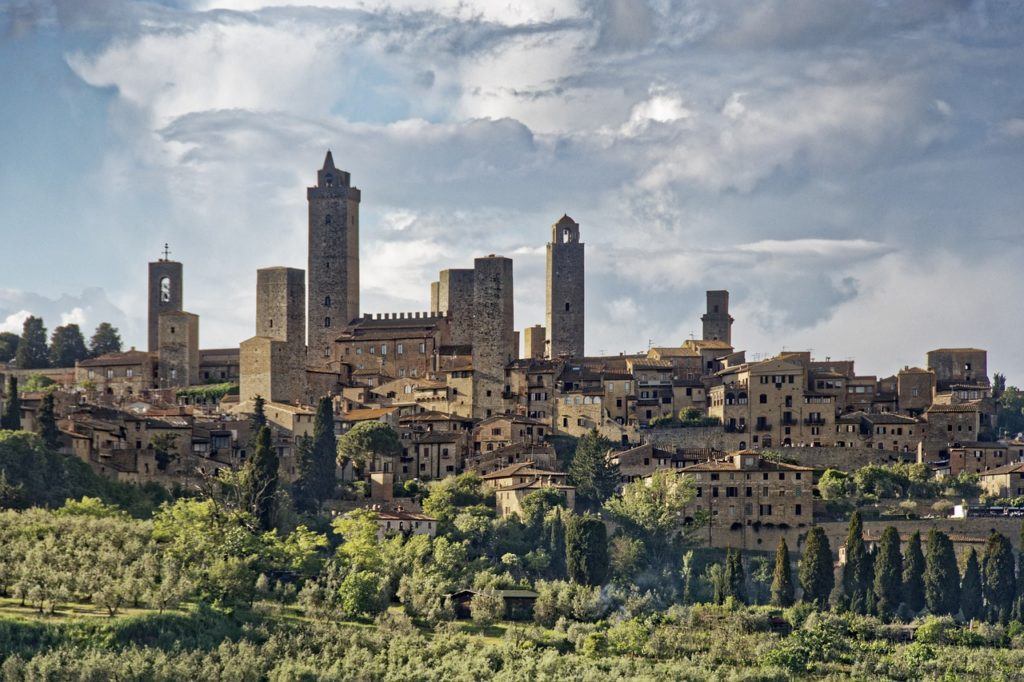
The winter months are cold, grey, and rainy. However, if you’re planning to visit the many museums and galleries in Florence, the winter months are ideal.
You’ll be able to pick up some discounted fares on amazing places to stay at this time and see various attractions without the bustling crowds. It’s a good idea to check opening hours as these can be shorter than during the summer.
Best Time to Go to Venice
Whether you’re planning to attend Carnevale in February, purchase ornate glass creations in Murano, hang out on the beaches of the Lido or take a day trip here from Milan, chances are you’ll be doing so alongside masses of tourists no matter which time of year you choose to visit.
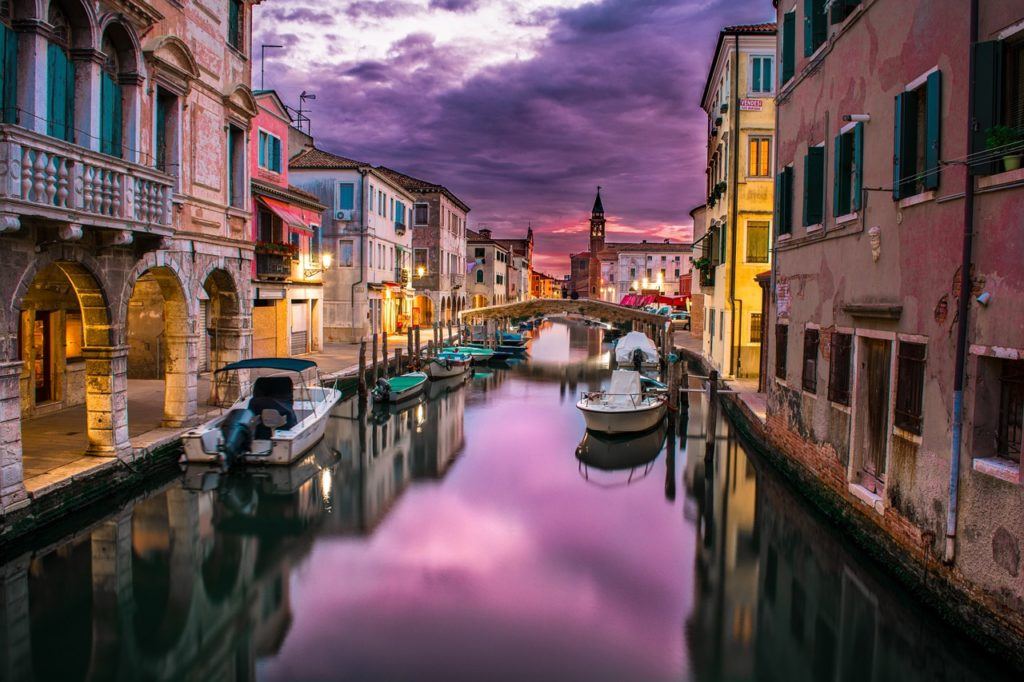
The summer months are hot and humid and attract hordes of tourists. While Venice is generally an expensive destination, the summer months can see prices dramatically rise.
The shoulder seasons offer fewer tourists but can be unpredictable in terms of the weather. Spring is often still rainy and damp, making outdoor activities less appealing. Autumn is warm and can yield some great deals on Venice accommodation.
Best Time for Visiting Tuscany
Dramatic coastlines, undulating farmlands of the countryside, and historic cities burst with art, architecture, and history. There’s something to see and do in Tuscany every season.
While the beaches are best between May and July, hitting the coast in August should be avoided as this is when the beaches are most crowded with locals. In the winter months, many of the small coastal towns shut down altogether.
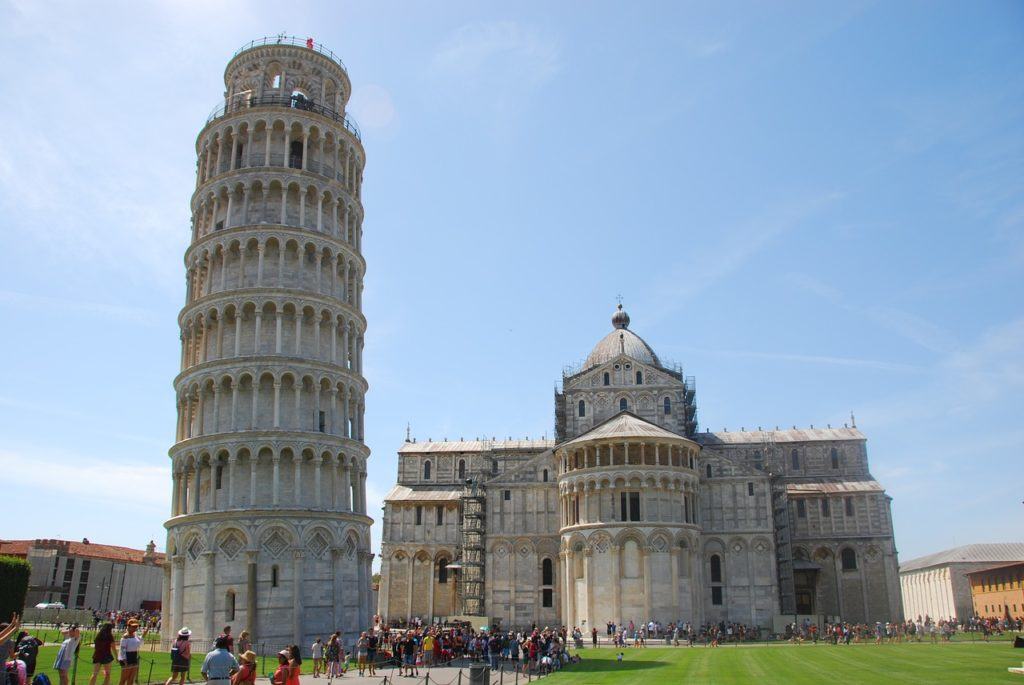
The Tuscan countryside is best experienced in the spring between April and May when the landscape reawakens in bright hues. The autumn months on the other hand offer a bounty of food and wine festivals, mild weather, fewer other tourists, and some great value deals on accommodation.
Visiting the churches, museums, and galleries in the cities is good in most seasons outside of the high summer period. With the weather being chilly and wet between November and March, it’s a good time to be indoors taking in the history and culture. You’ll spend less time waiting in long queues and benefit from reduced accommodation rates.

Stash your cash safely with this money belt. It will keep your valuables safely concealed, no matter where you go.
It looks exactly like a normal belt except for a SECRET interior pocket perfectly designed to hide a wad of cash, a passport photocopy or anything else you may wish to hide. Never get caught with your pants down again! (Unless you want to…)
Hide Yo’ Money!Best Time to Visit Italy for Parties and Festivals
Italians love a good celebration and need little reason to get together and have a great time. Celebrating ancient festivals in Italy and religious holidays is common, as are food and art festivals.
If you’re looking for an outrageous party to get stuck into, the peak season (May-September) is when you’ll discover the best.
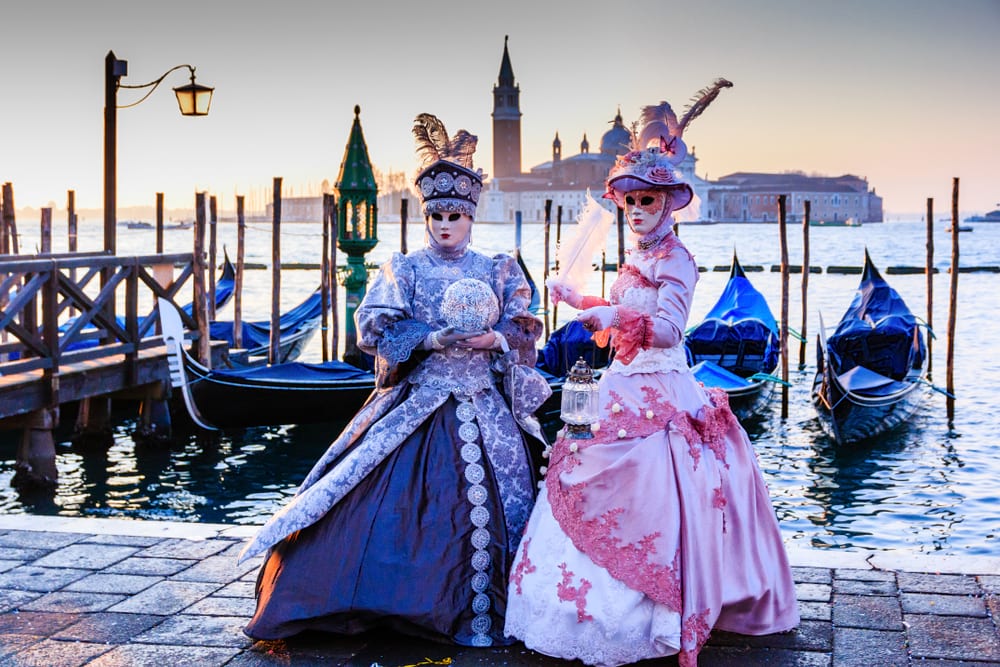
Here are our top festivals!
- Venice Carnival: One of the most well-known of Italy’s festivities is the carnival (or Carnevale) in Venice. Held just before the beginning of the sombre religious period of lent (usually falling in February), Carnevale is a very popular street festival.
- Holy Week: The Vatican City, the seat of the Catholic faith, lies within Rome, and the city celebrates Easter extravagantly. From the Pope’s Easter mass at St Peter’s Basilica to the Stations of the Cross procession at the Colosseum, Holy Week attracts visitors from around the world.
- Giro d’Italia Cycle Race: May brings cyclists to Italy in their droves for the Giro d’Italia, Italy’s answer to the Tour De France, while June 2 is the country’s Republic Day – a national holiday celebrated with parades, festivals, and concerts.
- Palio di Siena: One of Italy’s most popular festivals is the Palio di Siena, a historic horserace that takes place twice a year (July 2 and August 16) in the main square in Siena. It is at its heart a battle between the different city districts and can get quite spirited.
- Venice International Film Festival: Also in Venice in September is the Venice International Film Festival which is the world’s oldest film festival. It’s a celebration of film that attracts A-list stars on the screen to the red carpet and many related events.
- Food Festivals: Foodie delights can be celebrated at the Alba White Truffle Festival, the biggest of its kind in Italy. Another highlight is the Boccaccesca – a Tuscan food festival celebrating the region’s most popular dishes and wines.
Don’t Forget your Italy Travel Insurance
ALWAYS sort out your backpacker insurance before your trip. There’s plenty to choose from in that department, but a good place to start is Safety Wing.
They offer month-to-month payments, no lock-in contracts, and require absolutely no itineraries: that’s the exact kind of insurance long-term travellers and digital nomads need.
SafetyWing is cheap, easy, and admin-free: just sign up lickety-split so you can get back to it!
Click the button below to learn more about SafetyWing’s setup or read our insider review for the full tasty scoop.
FAQs about the best time to visit Italy
Here’s what we’re usually asked about the best time to visit Italy.
Final Thoughts on the Best Time to Visit Italy
If you’ve made it this far, you’ve probably identified the best time to visit Italy for you.
If you’re planning on travelling to Italy in the peak season, it’s best to plan well in advance to help you save a bit on the accommodation and to avoid disappointment. For travel outside of the high season, holding out for last-minute deals is risky but potentially very rewarding.
Whether you’re planning to museum hop, go skiing, or eat your way from north to south, there’s something for every season and every traveller. Italy is such an incredible place to visit that no matter when you visit, you’ll bring back amazing memories and be planning your return to see more.
Happy travels, and arrivederci.
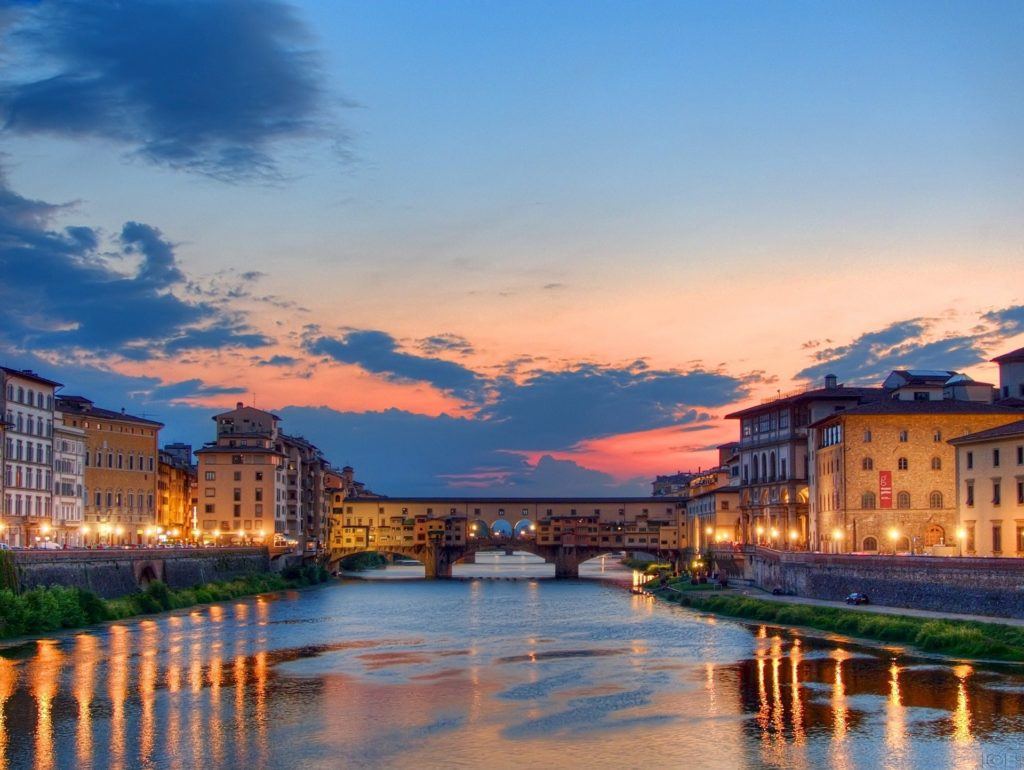
Made it this far?
You get 15% OFF to book a place to stay!
Offer valid exclusively for Broke Backpackers 😉







